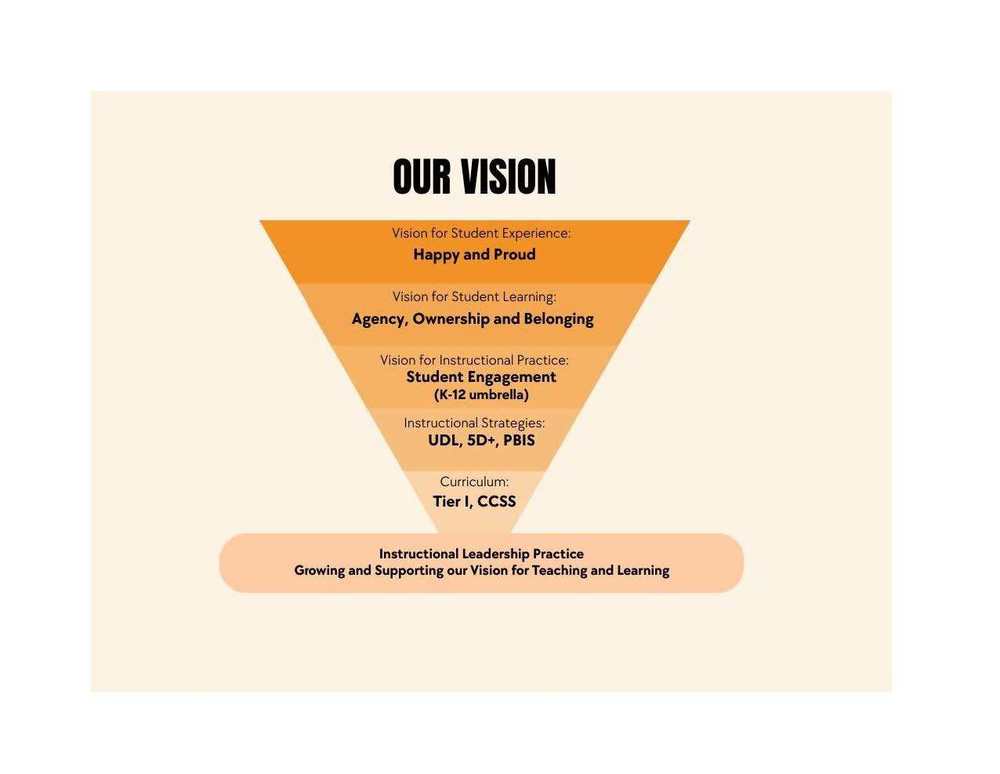Pyramid Language
Happy and Proud
We want all of our students to experience happiness and pride in their learning every day. Learning should be joyful and meaningful! Feeling a deep sense of pride and happiness at school comes from being stretched, doing hard work, seeing our own growth, and being successful.
____________________________________________________________________________
Agency: When students have a voice and choice in their learning — they set goals, make decisions, and take action to shape their own success.
Ownership: When students take responsibility for their learning — they understand what they’re working toward, care about doing well, and put in effort because it matters to them.
Belonging: When students feel accepted, valued, and connected at school — they know they are an important part of the classroom and the school community.
____________________________________________________________________________
Student Engagement
Our vision for student engagement is that all Blaine students are invested, interested, and involved in their learning. As a system we are focusing on ensuring that all students have frequent access to high quality academic conversations, active participation in the learning, and meaning making/higher level thinking.
● This year we are focused on Student Talk which is a key component of engagement. Whoever is doing the talking is doing the thinking! We want to increase student opportunities to talk with others and think aloud about the academic content. When teachers listen to students it helps understand how they are thinking, what their strengths are, and misconceptions they might have so that we can better support their learning and growth.
_____________________________________________________________________________________
Instructional Strategies
Each of our schools are selecting specific instructional strategies (teacher actions) to focus on that will help our students engage at higher levels and increase the amount of academic conversation, participation, and meaning making in classrooms.
Some Tools that support us in identifying strategies include
● The universal design for learning framework (link?)
● PBIS
Curriculum
Curriculum refers to “What we teach.” We believe our curriculum should support our overall vision for student learning and experience. WHAT we teach serves WHO we teach and not vice versa. As a system we are focused on teaching students the Washington state standards and have district-adopted materials that support this. We work together to follow an aligned curriculum while making adjustments that bring us closer to our vision and that support the needs of our students.
● We are excited to now have a K-12 aligned literacy curriculum and we are working together this year (teachers, leaders, support staff) to implement this well for our students. We teach students together in whole group settings and also offer opportunities for students to receive extra support as well as extensions based on their needs.

